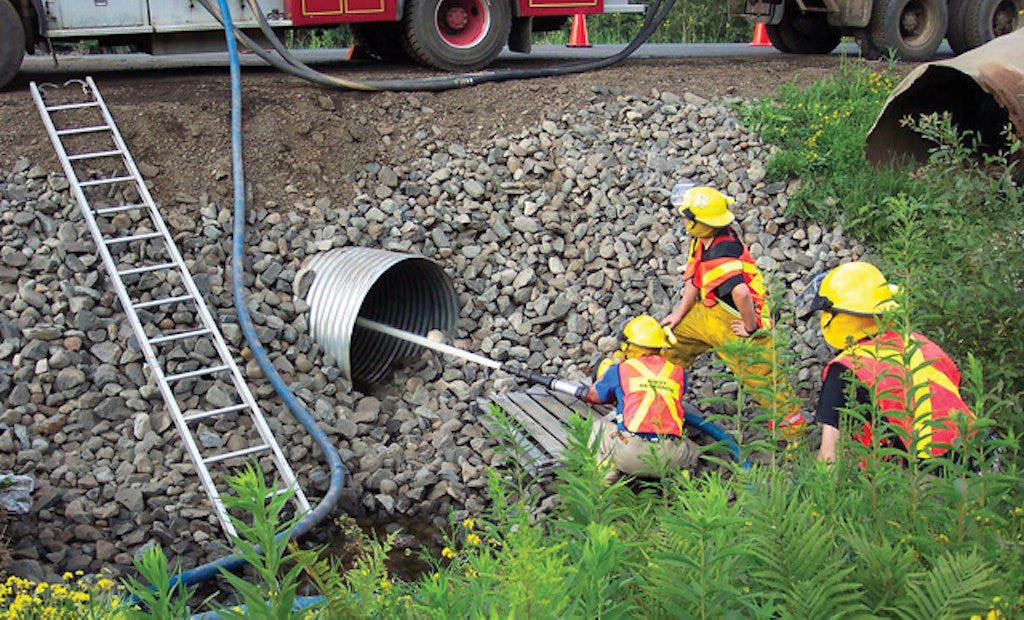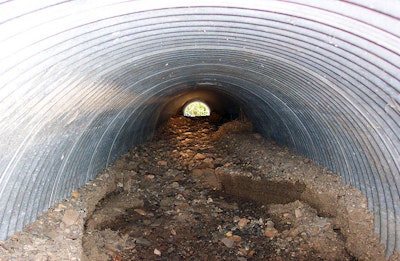
Interested in Infrastructure?
Get Infrastructure articles, news and videos right in your inbox! Sign up now.
Infrastructure + Get AlertsA road maintenance crew in northern Ontario has found that a stream of well-aimed high-pressure water from a fire department pumper may be as effective as using a combination truck in some cases.
A vicious rainstorm in June 2008 left a corrugated steel culvert on Highway 590 near Thunder Bay three-quarters full of sand, rocks and gravel. Standard operating procedure involves clearing culverts using a combination truck.
Never a doubt
“We’ve contracted vacuum trucks for culvert clearing, sewer sump and storm drain work, but it’s slow and limited to the size of debris it can move,” says Adrian Tessier, a maintenance superintendent with the Ontario Ministry of Transportation (MTO). “The culvert was four feet in diameter and 65 feet long. We did the math and it would cost more to contract a hydrovac than to replace the culvert.”
Tessier, a volunteer firefighter, reckoned the situation could use a blast of high-pressure water from a firehose. “I’ve seen firehoses knock down a brick wall,” he says. “I had no doubt it would work.”
maintenance contractor used a backhoe to dig a hole on one side of the pipe to catch the gravel. The backhoe would stand by to excavate the debris as it exited the pipe.
MTO hired a pumper truck from the township of O’Connor Fire Department to conduct the experiment. Because the fire truck remained on call during the operation, water was fed to the pumper from a tanker truck containing more than 5,000 gallons. The waterjet was supplied by a 1-inch firehose nozzle attached to a 2.5-inch pressure line.
Generating interest
“Volunteer firefighters anchored the hose to the ground and aimed a 150 psi waterjet at the far end of the pipe,” says Tessier. “At more than 300 gpm, the backhoe couldn’t keep up with the gravel exiting the culvert.”
The tanker was refilled once and volunteer firefighters answered a call during the operation, but in less than half an hour of active clearing, the firehose supplied almost 11,000 gallons of water and ejected more than 20 tons of debris.
Tessier points out that the operation could only succeed with a culvert that has 20 percent or more clearance, allowing debris to be ejected through the other end of the pipe.
“You also need to have access to the other side of the culvert to clear out debris, and you need to consider the length of the pipe,” he says.
The operation has sparked considerable interest from other jurisdictions. “Adrian is a born innovator,” says Dave McColl, manager of operations with MTO. “When we need the skills of a McGyver, he’s our go-to guy.”







